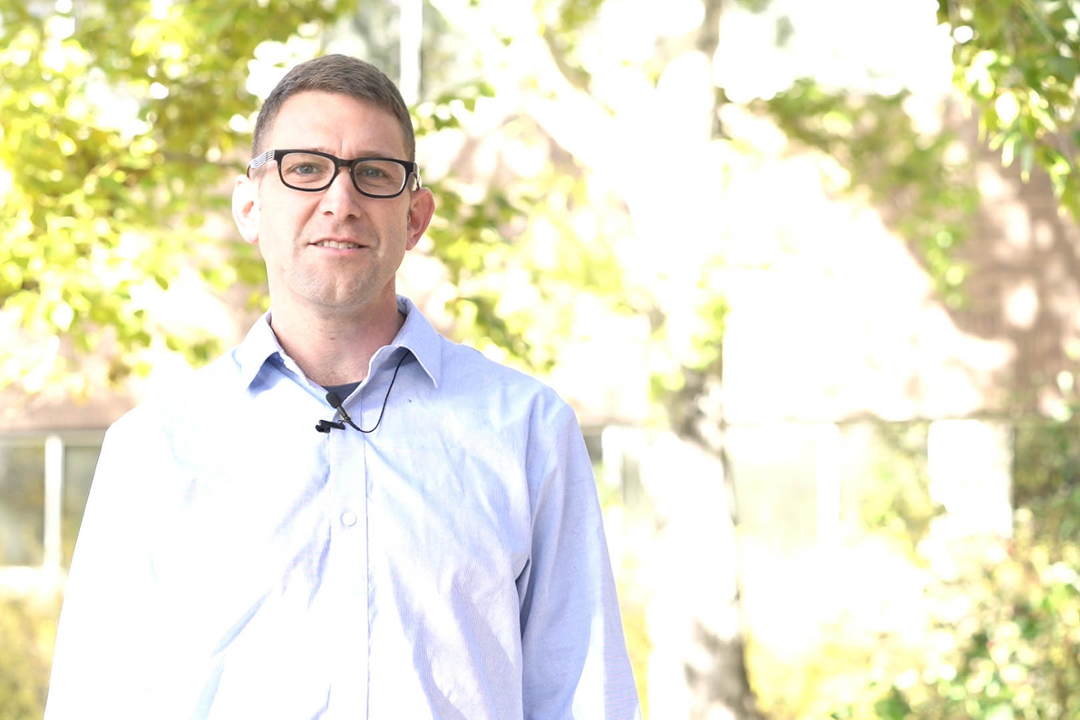
Scientists measure new depths at the bottom of the hydrologic cycle
For the first time, researchers have mapped groundwater circulation up to five kilometres below the surface—one of the first attempts to document the deepest parts of the hydrologic cycle.
By Ashleigh MatternThe research could allow people to make predictions at the continental scale about where it might be safer to store contaminants deep underground.
Hydrologists are usually interested in things like stream flow and flood predictions—water that generally resides in the top 10 metres or so of the earth.
This work is at the frontier of hydrology, microbiology and geology.
“It seems every time someone scratches a new spot in the subsurface, we find life existing somewhere we didn’t think it could before and one of the key aspects to that seems to be circulating water,” said co-author Dr. Grant Ferguson (PhD), a professor with the University of Saskatchewan College of Engineering, School of Environment and Sustainability, and Member of the Global Institute for Water Security.
“What we think we’re seeing in the subsurface is that it hasn’t adjusted to our current geology yet,” Ferguson said. “We’re looking at not only deep hydrology in the depth but deep time, too.”
The article “Deep Meteoric Water Circulation in Earth's Crust” was recently published by Geophysical Research Letters.
The research shows that water that began as precipitation can reach depths of more than one kilometre and as deep as five kilometres over much of North America. Steep mountains have deeper circulation of meteoric water and in places where the topography is relatively flat, the circulation depth is more shallow.
“The deep subsurface is a black box,” said co-author Dr. Jennifer McIntosh (PhD), professor in Hydrology and Atmospheric Sciences at the University of Arizona. “We wanted to illuminate that by using field measurements that people have done to tell how deep meteoric water … has been circulated.”

McIntosh said she was surprised how accurate their predictions were but the places their models didn’t work also shed interesting light on our world: She said in some places today’s topography can’t explain the circulation depths of meteoric water.
“If we go back in time, the earth’s surface looked different,” McIntosh said. “We are beginning to investigate how that change over geologic time has impacted water deep underground.”
This research touches on geological forces from when the Rocky Mountains were bigger or when the Grand Canyon was formed, so the water hundreds to millions of years old.
The researchers used a “fingerprinting” technology with water stable isotopes—non-radioactive forms of atoms that can be measured in water samples. The stable isotopes told them the origins and history of the water, which they compared to the predictions they had made on the depth of circulation based on topography and the geometry of the subsurface.
It was a data mining exercise. Most of the data points were samples collected by previous researchers, such as water that has seeped into deep mines.
“The water in the subsurface can be thousands to millions of years old, and in some places travelled kilometres deep before reaching their way back to the surface,” McIntosh said.
Along its flow path, the water reacted with rocks and released elements in what McIntosh describes as “a conveyor belt of water” that was once in contact with the surface and will eventually return to the surface carrying those natural signatures of their flowpaths.
“If you think about what our legacy might be, that water going into the ground today, circulating to depths of a few kilometres, what would some future civilization find?” Ferguson said.
Will microplastics and other contaminants go deep into the subsurface only to be found 100 million years from now by whatever civilization exists in that time? What will that tell them about us?
These are not topics hydrologists typically think about, said Ferguson, whose research is also part of the pan-Canadian Global Water Futures program
“[Hydrologists] think they’re talking about long time periods when they look at historical floods going back as far as the instrumental record would go,” which is about 100 years, Ferguson said.

